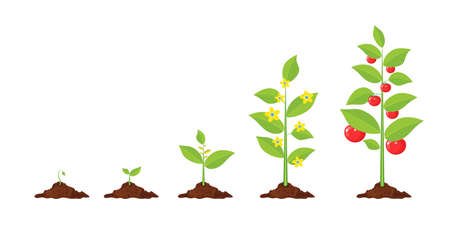Understanding Feng Shui Principles for the Modern American Home
Feng Shui, an ancient Chinese practice, focuses on balancing the energy or “chi” within a space to promote health, harmony, and positive relationships. While its roots are in Eastern philosophy, the core concepts of Feng Shui can be easily adapted to fit the design and lifestyle of today’s American households. By blending these principles with modern aesthetics and practical living, you can create a welcoming environment that supports both well-being and family connections.
What is Feng Shui?
At its heart, Feng Shui is about arranging your home to allow good energy to flow freely. This includes everything from the placement of furniture to the choice of colors and natural elements. For families who want to bring more vitality into their homes, integrating edible plants and herbs is a simple and enjoyable way to apply these ideas.
Key Feng Shui Concepts Adapted for American Homes
| Feng Shui Principle | Modern Application |
|---|---|
| Balance of Elements (Wood, Fire, Earth, Metal, Water) | Incorporate a mix of natural materials, such as wooden shelves for herb pots or water features like small fountains. |
| Clear Pathways for Energy Flow | Avoid clutter by keeping walkways open and using functional décor—like potted herbs—that add beauty without taking up too much space. |
| Nurturing Family Areas | Create cozy gathering spots in kitchens or dining rooms with fresh herbs or edible plants as centerpieces. |
| Healthy Air Quality | Use air-purifying edible plants (like mint or basil) that not only improve energy but also enhance your meals. |
Why Edible Plants and Herbs?
Edible plants and herbs do double duty: they boost your home’s positive energy while providing fresh ingredients for your kitchen. In the American context, growing familiar favorites like basil, cilantro, rosemary, and cherry tomatoes makes it easy for families to connect with both their food and their living space. Placing these plants thoughtfully around your home can help attract abundance, foster togetherness, and invite vibrant energy into daily life.
2. Selecting Edible Plants and Herbs with Positive Energy
When it comes to blending Feng Shui with your home garden, choosing the right edible plants and herbs is key. In American homes, familiar veggies, fruits, and kitchen herbs do more than feed the family—they can also attract positive energy, harmony, and abundance. By growing and displaying these plants thoughtfully, you can boost the overall well-being of your household.
Popular Edible Plants and Their Feng Shui Benefits
Some common edible plants are especially known for their uplifting energy. Here’s a handy table to help you choose which ones might work best for your family:
| Plant/Herb | Feng Shui Benefit | Placement Tips |
|---|---|---|
| Basil | Brings peace, love, and protection; enhances family unity | Kitchen window or sunny countertop |
| Rosemary | Promotes healing, clarity, and purification; reduces stress | Northeast or east areas for health and knowledge |
| Tomatoes | Symbolizes prosperity and joy; encourages abundance | South-facing garden or patio for vibrant energy |
| Lettuce | Attracts good luck and renewal; supports fresh starts | Garden beds or containers near entryways |
| Lemon Balm | Invites calmness and happiness; helps balance emotions | Kitchens or family gathering spaces |
| Peppermint | Cleanses stagnant energy; sparks creativity | Southeast corner for wealth, or on work desks |
| Lemon (Tree or Bush) | Cleansing energy; draws in positivity and growth opportunities | Front yard or porch in a large pot for welcoming vibes |
| Sage | Dissolves negative energy; encourages wisdom in the home | Near entrances or living rooms for protection and insight |
| Parsley | Boosts vitality; supports family health and wellness goals | Kitchens or outdoor herb gardens close to activity hubs |
| Chives/Green Onions | Energizes relationships; fosters open communication at home | Dining areas or communal spaces where families gather |
Simple Ways to Use These Plants at Home
- Pots on Windowsills: Place small pots of basil or rosemary where sunlight pours in—perfect for adding freshness to meals and uplifting the room’s mood.
- Container Gardens: Grow tomatoes or lettuce in raised planters on patios. This not only provides easy access but also brings abundant Chi (energy) right up to your doorstep.
- Aromatic Touches: Keep mint or lemon balm near entryways to greet guests with a burst of clean, happy energy.
Nurturing Family Energy Through Your Choices
The act of selecting, planting, and caring for these edible greens becomes a mindful ritual. It reminds everyone in the house to nurture not just the garden but each other as well. Even if you have limited space indoors or outdoors, growing just one or two of these positive-energy plants can make a difference in how your home feels—welcoming, peaceful, and full of life.

3. Strategic Placement: Locating Plants for Optimal Feng Shui
Bringing edible plants and herbs into your home is a wonderful way to boost positive family energy, but where you place them matters just as much as what you grow. In Feng Shui, the placement of plants can influence the flow of energy (also called “chi”), impacting harmony, health, and family connections. Let’s explore how to find the best locations in and around your home for your greenery, with a special focus on American homes and lifestyles.
Understanding Feng Shui Directions & Energy Flow
In Feng Shui, different areas of your home are linked to specific life aspects. By aligning plant placement with these directions, you can enhance their positive effects. Here’s a quick guide:
| Area of Home | Feng Shui Direction | Best Edible Plants/Herbs | Benefits for Family Energy |
|---|---|---|---|
| Kitchen | Southeast (Wealth & Abundance) | Basil, Mint, Chives | Nourishes prosperity and family bonds |
| Dining Room or Living Room | East (Health & Family) | Aloe Vera, Rosemary, Thyme | Promotes health and harmonious relationships |
| Entryway or Porch | South (Recognition & Fame) | Lemongrass, Parsley, Tomatoes in pots | Invites vibrant energy and positivity |
| Home Office or Study Nook | North (Career & Wisdom) | Sage, Oregano, Cilantro | Supports clarity and personal growth |
Maximizing Light and Airflow for Healthy Plants & Good Chi
A key part of both Feng Shui and gardening is making sure your plants get enough sunlight and fresh air. Most edible plants thrive in bright indirect light—think kitchen windowsills or sunny porches. At the same time, avoid placing plants in cramped corners or directly in front of doors where energy gets “stuck” or flows too quickly.
- Kitchens: Place pots on counters near windows or on open shelves for easy access and strong natural light.
- Living Spaces: Use hanging planters or tiered plant stands by east-facing windows to keep energy balanced and uplifting.
- Entryways: Welcome good energy by flanking your front door with potted herbs or cherry tomato plants if sunlight allows.
- Avoid: Placing edible plants in dark bathrooms or cluttered corners—these spots can stagnate both plant health and household chi.
Tuning Into Your Home’s Unique Layout
No two homes are exactly alike. Consider your family’s daily routines when deciding where to put your edible plants. For example:
- If your family gathers most often in the living room, add a few herb pots there to encourage togetherness.
- If you love weekend barbecues on the patio, create a mini herb garden near the grill for fresh flavors and lively outdoor energy.
- If mornings are spent around the kitchen island, line it with small basil or mint pots for an energizing start to the day.
Your Personalized Feng Shui Plant Map
The best placement combines traditional Feng Shui wisdom with what works for your household. Observe how light moves through your space and how your family flows from room to room. With a little thought and creativity, integrating edible plants into these key areas will nourish both your meals and your family’s positive energy every day.
4. Practical Plant Care: Blending Tradition with Convenience
Easy, Sustainable Care for Your Edible Feng Shui Plants
Caring for edible plants and herbs in your home doesn’t have to be complicated. By choosing simple, eco-friendly methods, you can maintain a thriving indoor garden that not only supports positive Feng Shui but also fits naturally into busy American lifestyles. Here are practical tips to help your plants—and your family’s energy—flourish.
Low-Maintenance Plant Choices
Selecting the right edible plants makes all the difference. Opt for varieties that are known for being hardy and low-maintenance, such as basil, mint, green onions, and cherry tomatoes. These are not only delicious but also adapt well to indoor environments.
Basic Care Routine
| Task | How Often | Quick Tips |
|---|---|---|
| Watering | 1-2 times/week | Check soil moisture; water when top inch feels dry. |
| Pruning/Harvesting | Weekly or as needed | Pinch off leaves or stems regularly to encourage growth. |
| Feeding (Fertilizer) | Once a month | Use organic, slow-release fertilizer for safe edibles. |
| Sunlight Placement | Daily | Place near a south-facing window or use grow lights if needed. |
Sustainable Practices That Work for You
- Reuse Water: Use leftover cooking water (cooled) for watering your plants—it’s rich in nutrients!
- Compost Kitchen Scraps: Start a small compost bin with fruit and veggie scraps to create natural fertilizer.
- No-Fuss Containers: Repurpose mason jars or coffee cans as plant pots—just make sure they have drainage holes.
- Pest Control: Use household items like diluted vinegar or soapy water spray to keep pests away without harsh chemicals.
The Feng Shui Connection: Placement Matters
For optimal Feng Shui, place your edible plants in areas associated with health and family, such as the kitchen or dining room. In American homes, placing fresh herbs on the kitchen windowsill is both practical and energetically uplifting. Consider grouping different herbs together for vibrant, balanced energy.
Troubleshooting Common Issues
- Browning Leaves? Check if you’re overwatering or if the plant needs more sunlight.
- No Growth? Try moving the plant to a brighter spot or feed it with organic fertilizer.
- Pests? Remove affected leaves and treat with gentle, natural sprays like neem oil.
Caring for your edible Feng Shui plants can be easy and rewarding when you blend traditional wisdom with modern convenience. With just a little effort each week, you’ll create a lively space that nurtures your family’s health and harmony.
5. Harvesting and Using Your Plants to Strengthen Family Bonds
One of the most rewarding aspects of integrating edible plants and herbs into your home’s Feng Shui is sharing the experience with your family. When you harvest and cook with herbs and vegetables grown right at home, you create opportunities for meaningful rituals that bring everyone closer together. Here’s how you can make the most out of this special process:
Making Harvest Time a Family Ritual
Setting aside time each week to pick fresh herbs or veggies can be a fun family tradition. Kids love seeing how their care has helped the plants grow, while adults can use this moment to teach responsibility, patience, and gratitude for nature’s gifts.
Simple Steps to Involve Everyone:
| Step | Who Can Join | How It Helps Family Energy |
|---|---|---|
| Planning the harvest | Everyone | Encourages communication and teamwork |
| Picking the produce | Kids & Adults | Builds excitement and appreciation for food |
| Washing and prepping together | Younger kids (with help) & adults | Creates chances for teaching and bonding moments |
| Cooking as a team | Teens & adults (with supervision for younger kids) | Fosters creativity and shared accomplishment |
| Sitting down to eat together | The whole family | Nurtures connection and positive energy flow at home |
Cultural Touches: Bringing American Traditions into Your Kitchen
You don’t have to stick with traditional Asian recipes—incorporate American favorites using your home-grown ingredients! Imagine making homemade pesto with basil from your backyard or adding freshly picked cilantro to tacos on Taco Tuesday. These small touches blend Feng Shui principles with local customs, making the experience feel both meaningful and familiar.
Fun Recipe Ideas:
- Basil Pesto Pasta: Use basil from your garden to make a classic Italian-American dinner.
- Lemon Balm Iced Tea: Brew a refreshing summer drink with lemon balm leaves for family gatherings.
- Salsa Night: Chop up tomatoes, cilantro, and jalapeños grown at home for a DIY salsa bar.
- Mojito Mocktails: Muddle fresh mint in sparkling water for a festive, kid-friendly drink.
- Rosemary Roasted Potatoes: Toss potatoes with rosemary from your planter box for Sunday dinners.
The Lasting Impact of Shared Garden Moments
When families participate in planting, harvesting, and cooking together, they naturally strengthen their relationships. These activities spark laughter, encourage conversation, and create memories that will last a lifetime. By weaving these rituals into your everyday life, you support not only good Feng Shui but also positive family energy that radiates throughout your home.


